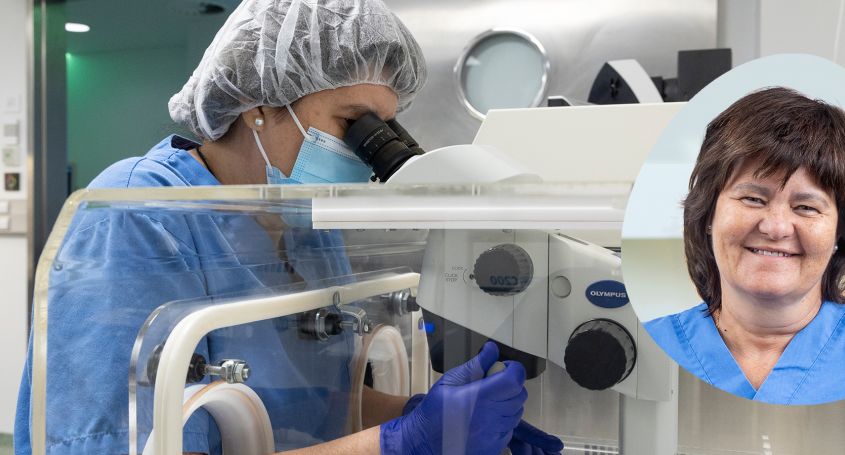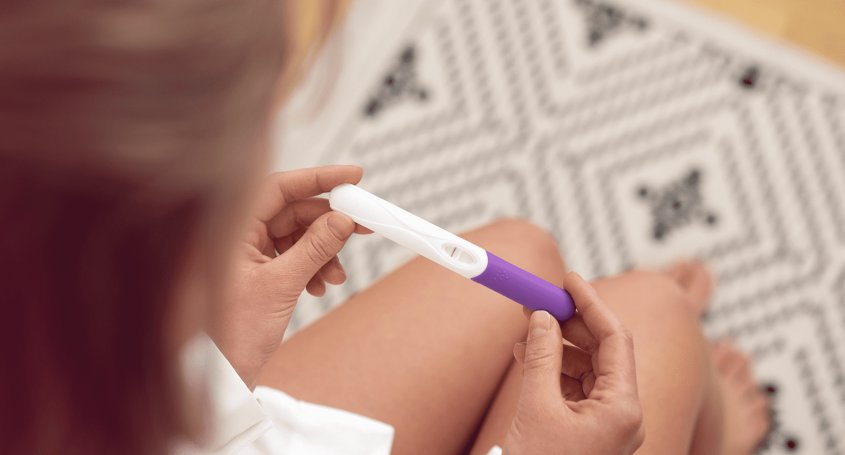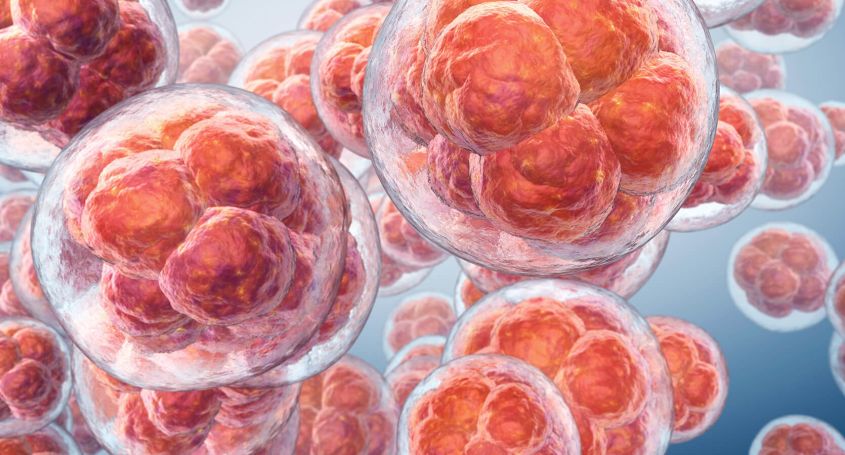Interview Dr. Ana Rabanal
Behind every assisted reproduction treatment there is a team of specialists who work with precision and dedication to optimise each stage of the process. In this context, the role of the embryologist is fundamental: from the fertilisation of the eggs to the selection of the embryo with the greatest implantation potential, their work combines science, technology and experience to increase the probabilities of success in fertility treatments.
To find out more about this exciting profession and the advances that are revolutionising embryology, we spoke to Dr. Ana Rabanal, embryologist and assisted reproduction specialist. In this interview, we explore everything from the key processes within the laboratory to the application of artificial intelligence tools in embryo selection.
1. What motivated you to go into embryology?
Biology is the science of life, and I think there is no more interesting discipline. I have always been passionate about life, how it is generated, how it is maintained, how it evolves, how it adapts..
2. From a technical point of view, what processes are crucial to ensure the successful fertilisation of the eggs in an IVF cycle?
Undoubtedly, having a diagnosis of the cause of infertility is very important, but all of us who are dedicated to assisted reproduction know that, on some occasions, we do not find the cause. From this point on, we have very innovative insemination techniques that help us to carry out the process in the most optimised way possible and to obtain the maximum number of fertilised eggs. In this way, we will have the maximum number of embryos available to choose the one with the greatest implantation potential.
3. How is genetics used in the embryonic process and which tools are key to pre-implantation genetic diagnosis (PGD)?
The genetics of embryos is sometimes expressed from a morphological point of view, but on many occasions it is not. We can have an embryo of very good quality, and yet be a carrier of a chromosomopathy. It is in these cases, and usually due to clinical antecedents, when we can study the genetics of the embryo through the technique of Preimplantational Genetic Diagnosis. To do this, we perform a biopsy in the outer cell layer of the embryo (trophoectoderm) and we can request a genetic study of these cells. In this way we can know the genetics of the embryo and be able to rule out those that are carriers of chromosomopathies. The process is very delicate so as not to interfere with the viability of the embryo, and it is for this reason that it is very necessary for it to be carried out by very expert hands. In this way the biopsy process, being an invasive process, will not affect the embryos or their viability.
4. In relation to incubators and monitoring systems, how do they impact on embryo evolution and decision-making?
The revolution that embryologists have experienced since the availability of these incubators with continuous monitoring of the embryo is impressive. With the Time-Lapse system, we have seen the whole process of embryo development and we have learned a lot about the embryo. Many times, these monitoring systems help us to discard embryos that in their development have made incorrect steps and that we could not have seen if they were not monitored and this is very important because they would be embryos whose final quality would seem optimal to us, however, their implantation rate would be much lower than expected.
5. The selection of the embryo with the greatest implantation capacity is key in an IVF cycle. In addition to morphological evaluation and time-lapse, how are artificial intelligence-based tools such as IDAScore revolutionising this process?
For us embryologists, it is a very new field that we are still learning about, but there is no doubt that it is going to be a new revolution in the field of assisted reproduction. It is clear that we humans have limitations compared to machines, and what distinguishes us from them is learning and experience. But this AI system learns with the embryos, so, together with our experience as embryologists, what we achieve is to enhance the decisions we make about the embryos with more criteria. It will undoubtedly be an essential tool in the coming years in laboratories.
6. Finally, what is the impact of the embryologist's experience in making critical decisions in the laboratory?
The experience of embryologists is undoubtedly a very important asset in an assisted reproduction laboratory. This experience can only be acquired over the years, in which biologists may have encountered an infinite number of situations that they will have solved, so this professional learning is basic for a laboratory to have optimal results. The elaboration of protocols, the resolution of problems that may arise in the day-to-day running of the laboratory, will undoubtedly be faced with security and professionalism by an expert embryologist. Without a doubt, the decision will generate security and tranquillity for the team, which in turn will learn to become an expert in the near future.
The work of the embryologist is a combination of knowledge, precision and constantly evolving technology. We thank Dr. Ana Rabanal for sharing her experience and helping us to better understand the essential role she plays in fertility treatments. At Barcelona IVF , we remain committed to innovation and scientific rigour to offer our patients the best opportunities on their path to parenthood.















